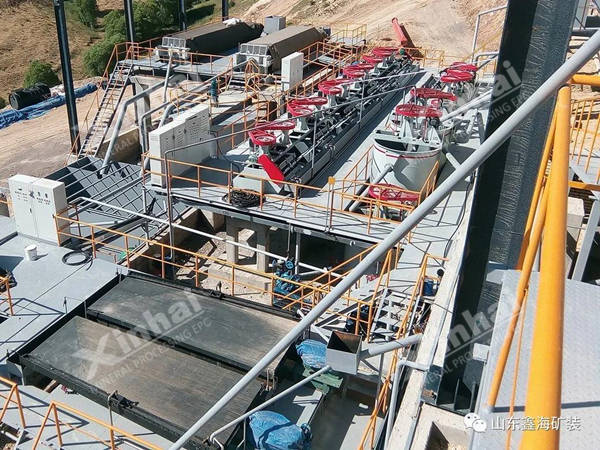Low-grade tin ore usually has the characteristics of complex mineral composition, low grade, and many associated minerals. It is difficult to achieve efficient recovery with traditional single beneficiation process. Therefore, the combined beneficiation process came into being. Through the organic combination of multiple beneficiation methods, the recovery rate and economic benefits of low-grade tin ore have been significantly improved.
The main characteristics of low-grade tin ore are: low grade, usually with a tin content of less than 1%; complex mineral composition, often accompanied by a variety of minerals, which makes separation difficult; fine particle size, with useful minerals mostly in the form of fine particles, which are difficult to effectively recover using traditional methods.

(1) Gravity separation process
Gravity separation process mainly uses the density difference of minerals for separation and is suitable for processing coarse tin ore. Commonly used gravity separation equipment includes spiral chutes and shaking tables. By optimizing equipment parameters, coarse tin minerals can be effectively recovered and enriched ore can be provided for subsequent processes.
(2) Flotation process
Flotation process is the core link of low-grade tin ore beneficiation. By adding collectors and regulators, tin minerals can be separated from other minerals. The application of new flotation agents and the optimization of process parameters can significantly improve flotation efficiency and tin recovery rate.
(3) Magnetic separation process
Magnetic separation process is mainly used to process tin ore containing magnetic minerals. Permanent magnetic separators or electromagnetic separators are used to separate magnetic minerals, thereby improving the grade of tin minerals. Magnetic separation process plays an important auxiliary role in the beneficiation of low-grade tin ore.
(4) Leaching process
Leaching process dissolves minerals through chemical or biological methods to achieve tin leaching. Acid leaching and alkaline leaching are common leaching technologies suitable for treating tin oxide ores or low-grade tailings. The leaching process can further recover valuable metals in tailings and improve resource utilization.
(5) Combination of combined processes
Gravity separation + flotation: First, coarse-grained tin minerals are enriched by gravity separation, and then fine-grained tin minerals are recovered by flotation.
Gravity separation + magnetic separation: Combining the advantages of gravity separation and magnetic separation, magnetic minerals are separated to improve the grade of tin minerals.
Flotation + leaching: After recovering useful minerals by flotation, the leaching process is used to further recover valuable metals in tailings.
Compared with a single beneficiation process, the combined beneficiation process can effectively improve the beneficiation recovery rate and reduce costs. At the same time, it can also achieve comprehensive recovery of associated minerals. It can be said to kill two birds with one stone. Its advantages are unmatched by a single beneficiation process.
The low-grade tin ore combined beneficiation process combines the advantages of multiple beneficiation methods and plays a positive role in improving the beneficiation recovery rate and economic benefits. Nowadays, intelligent mineral processing technology and green mineral processing technology have been widely used. It is believed that the development and utilization of low-grade tin ore will be better developed.